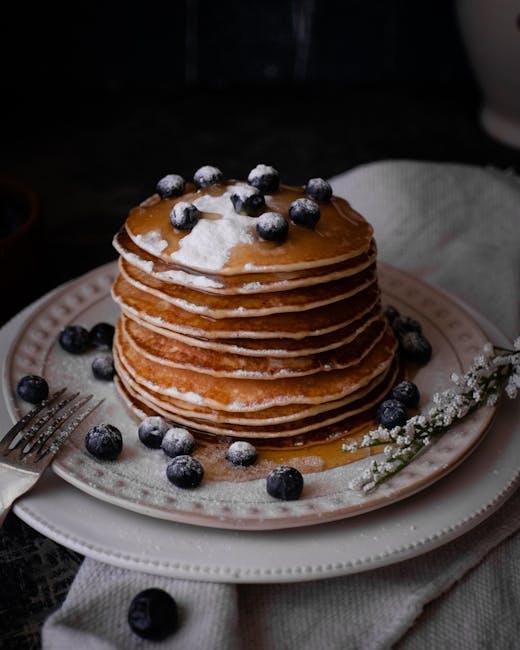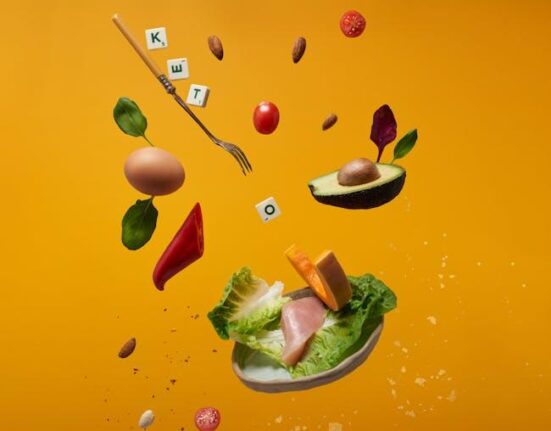In the vast aisles of supermarkets, sugars often walk undercover, tucked away in seemingly innocent packages and labels. While a spoonful of sweetness can brighten a day, hidden sugars lurking in everyday foods may quietly tip the scales of your health. Navigating this sugary maze requires more than just a quick glance at the nutrition facts—it demands a keen eye and an informed approach. In this article, we’ll explore practical strategies to help you spot and avoid those elusive sugars, transforming your shopping trips into mindful missions for a healthier lifestyle.
Table of Contents
- Recognizing the Common Sources of Hidden Sugars in Everyday Products
- Decoding Ingredient Labels to Spot Sneaky Sweeteners
- Smart Swaps for Healthier Alternatives in Your Grocery Basket
- Strategies for Managing Cravings and Reducing Sugar Dependence
- Building a Balanced Shopping Routine to Support Long-Term Wellness
- Q&A
- In Conclusion

Recognizing the Common Sources of Hidden Sugars in Everyday Products
When it comes to curbing sugar intake, the trickiest culprits are often products you wouldn’t immediately suspect. Many everyday foods are packed with concealed sugars that sneak into your diet, undermining healthy choices. These sugars lurk in “healthy” snacks, salad dressings, and even savory items like bread and pasta sauces. Recognizing these stealthy ingredients requires a savvy eye on labels. Words like sucrose, maltose, dextrose, high-fructose corn syrup, and evaporated cane juice can all indicate hidden sweetness masquerading behind unfamiliar names.
To help you navigate the supermarket aisles confidently, here’s a quick guide to common foods where hidden sugars often appear:
- Flavored yogurts: Packed with added syrups and fruit concentrates.
- Granola bars and cereals: Loaded with sweeteners for enhanced taste.
- Condiments and sauces: Ketchup, barbecue sauce, and mayonnaise blends.
- Bread and baked goods: Sugar is often added for browning and texture.
- Beverages: Iced teas, flavored waters, and even some sports drinks.
| Product Category | Typical Hidden Sugars | Label Tip |
|---|---|---|
| Dairy | Fruit concentrates, lactose | Check for “unsweetened” options |
| Snacks | Honey, malt syrup | Look beyond “natural” claims |
| Sauces | High-fructose corn syrup, molasses | Avoid those with multiple sugars listed |

Decoding Ingredient Labels to Spot Sneaky Sweeteners
When scanning ingredient labels, it’s crucial to recognize that sugar disguises itself in many forms, often camouflaging as something far less conspicuous. Terms like evaporated cane juice, malt syrup, or dextrose might not immediately scream “added sugar,” but they contribute to your daily sugar intake just the same. To stay ahead, familiarize yourself with these common aliases and keep an eye out for ingredients that end in “-ose,” such as glucose, fructose, and sucrose. These often indicate sweetening agents cleverly masked within seemingly wholesome ingredients.
- Look for ingredients listed towards the end to find hidden sugars.
- Beware of products boasting “no added sugar” but containing natural sweeteners.
- Check serving sizes—sugar content can be misleading when based on small portions.
| Common Sneaky Sweeteners | What to Watch For |
|---|---|
| Agave Nectar | Often perceived as healthy but high in fructose |
| Maltodextrin | Highly processed, spikes blood sugar |
| Rice Syrup | Lower sweetness but high glycemic index |

Smart Swaps for Healthier Alternatives in Your Grocery Basket
When navigating grocery aisles, the key to slashing hidden sugars is swapping out common high-sugar items for smarter, nourishing picks. Instead of reaching for flavored yogurts loaded with added sweeteners, grab plain Greek yogurt and sweeten it naturally with fresh berries or a drizzle of honey. Similarly, trade conventional white bread for whole grain or sprouted versions—these alternatives boast more fiber and fewer refined sugars, keeping your energy steady without the sugar spikes.
Explore these smart swaps to immediately lighten your sugar load:
- Condiments: Choose mustard or vinegar-based dressings over ketchup or barbecue sauces.
- Beverages: Replace soda with sparkling water infused with slices of lemon or cucumber.
- Snacks: Opt for raw nuts or seeds instead of sweetened granola bars.
| High Sugar Item | Healthy Alternative | Sugar Content |
|---|---|---|
| Flavored Yogurt (1 cup) | Plain Greek Yogurt + Berries | 19g vs. 7g |
| Regular Soda (12 oz) | Flavored Sparkling Water | 39g vs. 0g |
| Granola Bars (per bar) | Raw Nuts and Seeds | 12g vs. 1g |

Strategies for Managing Cravings and Reducing Sugar Dependence
Conquering sugar cravings starts with shifting your focus from restriction to nourishment. Instead of battling urges, embrace natural alternatives like fresh fruits, nuts, and yogurt to satisfy your sweet tooth. Keeping your pantry stocked with these wholesome options makes it easier to resist the siren call of processed treats. Pairing these snacks with a source of protein or fiber can help stabilize blood sugar levels and sustain energy, reducing those sudden spikes and crashes that often trigger intense sugar cravings.
Practical habits can also transform your relationship with sugar. Here’s how to stay ahead:
- Hydrate regularly: Sometimes thirst masquerades as hunger or a sugar craving.
- Mindful eating: Savor every bite and listen to your body’s true hunger signals.
- Gradual cuts: Slowly reduce sugar intake to allow your taste buds to reset.
- Read labels vigilantly: Spot hidden sugars under names like maltose, dextrose, or syrups.
| Craving Trigger | Effective Strategy |
|---|---|
| Stress | Practice deep breathing or short walks |
| Boredom | Engage in a hobby or quick activity |
| Low Energy | Eat a balanced snack with protein and fiber |
| Distorted Hunger | Drink water first and wait 15 minutes |

Building a Balanced Shopping Routine to Support Long-Term Wellness
Creating a sustainable shopping routine means learning the art of balance—choosing items that nourish without sneaking in excessive sugars that derail your wellness goals. Begin by prioritizing whole foods like fresh produce, lean proteins, and whole grains. These naturally contain minimal to no hidden sugars and offer essential nutrients for lasting energy. When selecting packaged goods, scrutinize the ingredient list and nutrition facts for sugar-related terms such as maltose, dextrose, syrups, or anything ending in “-ose.” Developing a habit of checking labels transforms shopping from a simple chore into an empowering strategy to safeguard your health.
Incorporate these tips into your routine for smarter choices that promote steady wellness:
- Shop the perimeter: Fresh produce, dairy, meat, and bakery sections typically offer less processed options.
- Plan meals: A prepared list helps resist impulse buys laden with hidden sugars.
- Embrace minimally processed snacks: Nuts, seeds, and plain yogurt can curb cravings without added sugars.
| Common Hidden Sugar Names | Why to Watch Out |
|---|---|
| High Fructose Corn Syrup | Highly processed, linked to weight gain |
| Evaporated Cane Juice | Disguises as natural but is still sugar |
| Dextrose | Rapidly raises blood sugar levels |
Q&A
Q&A: How to Avoid Hidden Sugars When Shopping
Q1: What exactly are hidden sugars, and why should I be concerned about them?
A1: Hidden sugars are sweeteners added to foods and beverages that don’t always appear as obvious “sugar” on the label. They sneak in under names like maltose, dextrose, corn syrup, or even “fruit juice concentrate.” Consuming too many hidden sugars can lead to health issues such as weight gain, energy crashes, and increased risk of chronic diseases. Being aware helps you make smarter choices and maintain balanced nutrition.
Q2: How can I spot hidden sugars on ingredient lists?
A2: Look beyond the simple word “sugar.” Check the entire ingredient list for dozens of aliases like sucrose, high-fructose corn syrup, agave nectar, honey, molasses, and even “natural flavors” that can mask added sugars. Ingredients are listed in order of quantity, so if any sugar type is near the top, that product likely has a high sugar content.
Q3: Are there particular types of products more likely to contain hidden sugars?
A3: Yes! Pre-packaged foods such as sauces, dressings, flavored yogurts, granola bars, cereals, breads, and even savory items can surprise you with unexpected sugar content. Additionally, many beverages including flavored waters, iced teas, and “healthy” smoothies often pack in more sugar than you’d expect.
Q4: Is “no added sugar” the same as “sugar-free”? How do these labels affect my shopping?
A4: Not quite. “No added sugar” means no sugar was added during processing, but the product might naturally contain sugars (like fruit). “Sugar-free” means less than 0.5 grams of sugar per serving, but beware of sugar alcohols or artificial sweeteners that might have other effects. Always double-check ingredient lists and nutrition facts to understand the full picture.
Q5: How can I reduce sugar intake without sacrificing flavor?
A5: Opt for whole, unprocessed foods: fresh fruits, vegetables, nuts, and lean proteins. Experiment with herbs, spices, and citrus zest instead of sugary sauces. When choosing packaged items, pick versions labeled “unsweetened” or with lower sugar content. Gradually retrain your taste buds to appreciate natural sweetness and savory complexity.
Q6: Are natural sweeteners like honey or maple syrup healthier options?
A6: While natural sweeteners provide some trace nutrients and have a lower glycemic index than refined sugar, they’re still sugars that contribute calories and affect blood sugar. Moderation is key; consider them a treat rather than a staple.
Q7: Any quick tips for efficient sugar-savvy shopping?
A7: Yes:
- Always carry a grocery list focused on whole foods.
- Scan ingredient lists for any sugar synonyms.
- Compare nutrition labels for grams of total and added sugars per serving.
- Shop the perimeter of the store, where fresh foods typically live.
- Be skeptical of health claims on flashy packaging—they don’t guarantee low sugar.
By staying vigilant and informed, you can become a savvy shopper who outsmarts hidden sugars and supports your health with every cartful.
In Conclusion
Navigating the aisles with a keen eye for hidden sugars is less about restriction and more about reclaiming control over what fuels your body. By becoming a savvy shopper—reading labels carefully, spotting the many aliases of sugar, and choosing whole, unprocessed foods—you can peel back the layers of mystery hiding in everyday products. Remember, awareness is the first step toward making informed choices that support your health and well-being. So next time you reach for that seemingly harmless snack, let your newfound knowledge guide you beyond the sugar curtain, toward a clearer, cleaner pantry and a more mindful relationship with what you eat.














Leave feedback about this